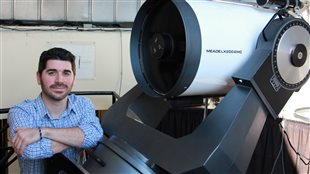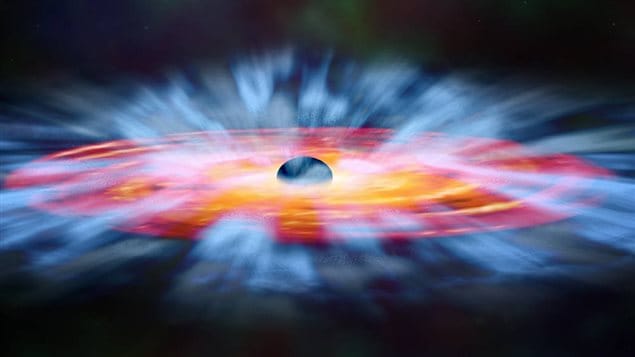More mysteries of black holes in the universe are being revealed and unravelled at York University in Toronto while leading an international team of astrophysicists
The scientists have detected the fastest ever ultraviolet wavelength winds being pushed out from black hole quasars at an astounding 220 million kilometres per hour. (220,000.000 kh/h or roughly 60,000 km/second)
PhD candidate and astrophysicist Jesse Rogerson at York led the research.
Listen
The research was published today in the science journal, Monthly Notices of the Royal Astronomical Society, under the title,” Multi-epoch observations of extremely high-velocity emergent broad absorption“.
In fact they discovered the fastest ultravioled winds ever recorded, but as Jesse Rogerson notes, there were other recorded winds at incredible speeds, including one at 140 million kilometres an hour from this same quasar.
“Quasar winds play an important role in galaxy formation,” says Rogerson. “When galaxies form, these winds fling material outwards and deter the creation of stars. If such winds didn’t exist or were less powerful, we would see far more stars in big galaxies than we actually do”.
The York University scientists worked in collaboration with scientists at Humboldt State University, Pennsylvania State University, and Erciyes University (Turkey) and data was collected with the Gemini Observatory’s twin telescopes in Hawaii and Chile, in which Canada has a major share.
The research was supported by the National Science and Engineering Research Council of Canada (NSERC), Government of Ontario, The Scientific and Technological Research Council of Turkey, and the National Science Foundation (USA).
York University Physics and Astronomy
YouTube- why are the solar system, (galaxie, quasars) flat discs?







For reasons beyond our control, and for an undetermined period of time, our comment section is now closed. However, our social networks remain open to your contributions.